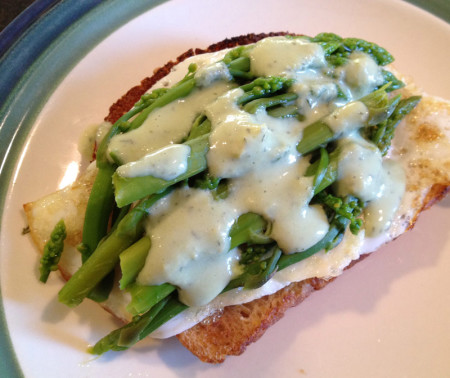
Spruce tips—those soft, light-green new tips that grow on spruce (Picea spp.) in spring—have become wildly popular lately, and I’m still sleuthing about trying to find out where that idea on the culinary use of spruce tips came from. Maybe the cookbook Noma: Time and Place in Nordic Cuisine by Chef Rene Redzepi. Or, I just read in Ava Chin’s article that there is a chapter Connie Green’s book, The Wild Table: Seasonal Foraged Food and Recipes (2010), so that’s now on my wild edible wish list too.
I couldn’t find many references as to the edibility of spruce tips aside from tea in my own book collection, but in Edible and Medicinal Plants of the Rockies (2000), Kershaw warns: “Always use evergreen teas in moderation. Do not eat the needles or drink the teas in high concentrations or with great frequency.” She warns against evergreen needle teas for pregnant women, but indicates that as an emergency food, “tender young shoots, stripped of their needles, can be boiled.”
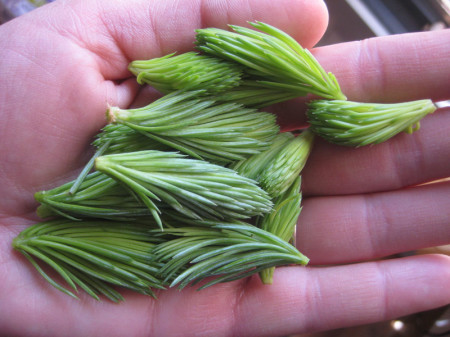
I emailed Sam Thayer for his thoughts and he said that as a kid he used to nibble evergreen tips. “I don’t know why there’d be a warning,” he wrote. “I suppose a half pound would make you feel icky, but I don’t think anyone eats them in big quantity.”
It was enough for me. Especially as I am not expecting, and I’d already been eating them. Besides, spruce tip beer is a big thing, and spruce is high enough in vitamin C that it is good for preventing scurvy. Bonus.
My friend Butter introduced me to spruce tips last year, and true to her promise they were citrusy, bright lime green, and totally neat. We collected them while they were new and very soft. I dried my first batch and made it into spruce tip salt, per her recipe. That salt is still in use in our kitchen. I’ve used it on homemade potato skins and on some curly dock chips I made a few weeks ago too. It’s a nice twist on normal salt.
Foraging blogger Amber Westfall notes that it is best to harvest the tips on the two sides of the three-pronged end of the spruce branch, leaving the center tip—which she explains is the apical meristem—alone so as not to stunt the tree’s growth. Her recipe for spruce tip dip involves blending spruce tips, oil, apple cider vinegar, and dandelion flowers. She served it to a class with endive leaves and Romaine hearts for dipping, but also recommends its use as salad dressing or a sauce on fish. I was inspired!
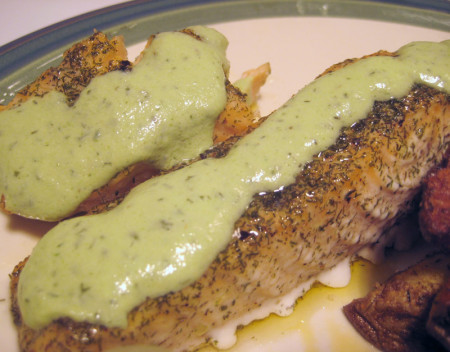
I started to daydream about a creamy dilled yogurt sauce on salmon, so I decided to take the recipe in that direction instead. Of course then we didn’t have any yogurt, so I wound up using some thick kefir instead. The kefir is made from home-fermented milk, a process I’ve been obsessing over these last few months.
Ingredients:
1 big handful spruce tips
1-1.5 cup kefir or plain yogurt, thinned
Approx. T tbsp pickled ginger
1 wild onion (Allium spp.) or green onion, bulb and greens, chopped fine
Approx 1 tsp dill (I used dried dill)
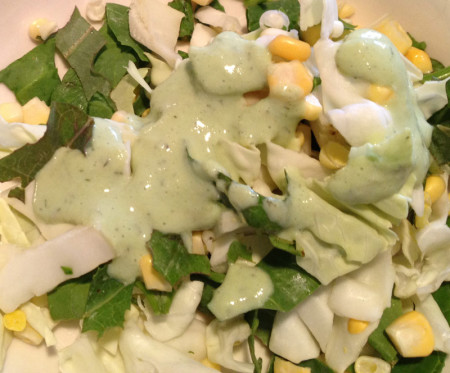
Instructions:
Blend spruce tips, kefir/yogurt, ginger, and onion until smooth. Add dill and serve.
A Sauce of Many Uses
We tried the sauce a couple different ways. On the spiced salmon, it was divine. Gregg made noise about it all through dinner. Asparagus spears dipped in the dregs on my plate tasted great too.
The next day for lunch we tried it on a semi-wild salad of prickly lettuce (Lactuca serriola), orache (Atriplex heterosperma), fresh corn kernels, and cabbage. However, it was quite citrusy and a tad astringent in that context. You should have seen Gregg. He pretended to enjoy the salad, but then surrendered the bowl to me when I said I would eat it and he could use a different dressing on his. (Here’s the recipe for that other dressing, which he loves.)
The morning after that I served eggs over easy on toast with steamed asparagus on top, finished with the creamy green yogurt sauce on top of that. That was delicious! A hit by both our estimations.
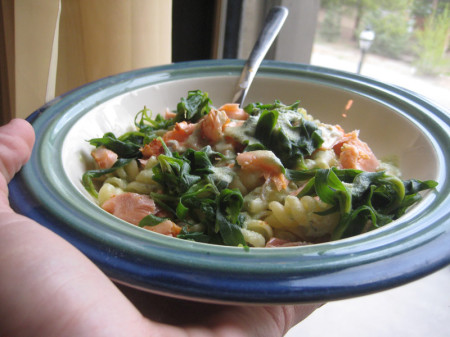
Last but not least, I went way out on a wild edible tangent last night with a rotini pasta sprinkled with leftover salmon bits and boiled kochia tips (Kochia scoparia), with the creamy green yogurt sauce mixed through it. We didn’t hate it, though apparently cooking with kochia takes practice.
Don’t Say No
This batch of spruce tips came from my most recent trip down to the Denver area. Butter was so excited that the spruce tips were out, she took me to “her tree” and we gathered a small bag full. At the end of our day of foraging, when I was divvying up the veggies and she was cooking up a fabulous meal of wild pizza on her countertop Pizza Pizzazz, I volunteered all the spruce tips for her to keep. She was shocked. “You don’t want them?” she asked, incredulous.
“Okay, I’ll take a few,” I said, in part so as not to offend my friend.
Well, thank goodness I did! We got a lot of great meals out of that green sauce.
NOTE: Don’t confuse edible conifer tips with yew (Taxus sp.). Though the red fleshy berries are edible if you spit out the seeds, other plant parts are extremely poisonous. Yews are evergreen shrubs or small trees with needles, commonly used in landscaping, with wild species native to the Northeast and Pacific Northwest.
Updated 3.26.21
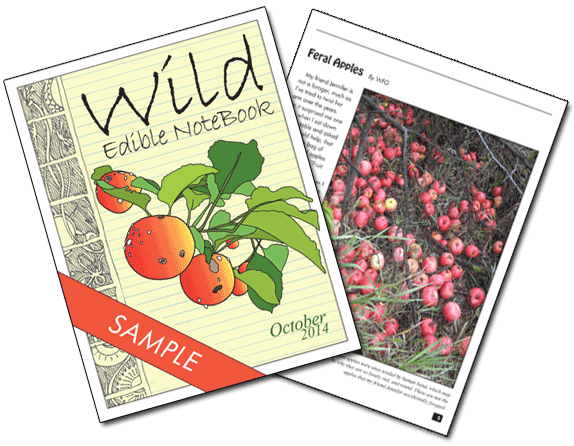
Ponderosa pine is somewhat widely known as a cow abortifacient, maybe that’s what Kershaw was thinking of? I *hate* authors who make vague claims of toxicity without citing their sources. Stabstabstab.